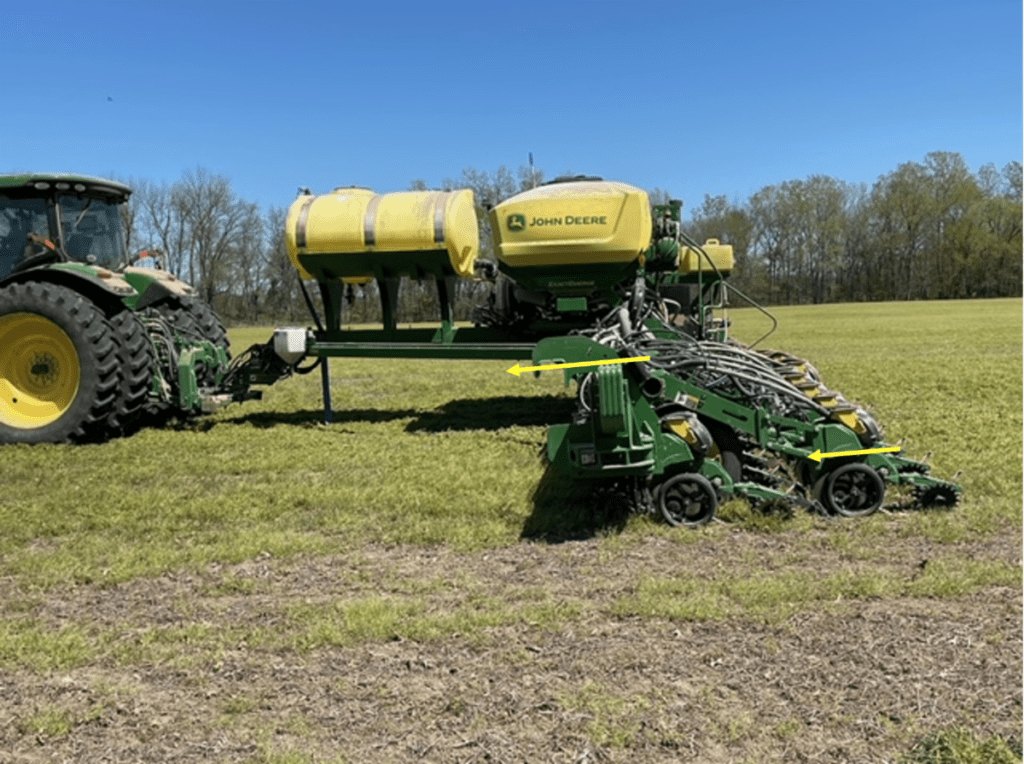By Ethan Begle

It’s planting season again, which means it’s time to get back to basics. Since the planter opener is still the same design as many moons ago, no number of automated sensors will beat getting out often and physically checking furrows and planter setup. In any major sports game, it’s often the fundamental mistakes that determine the winner in close matches. Basic planter function works the same way.
The performance of the whole planter rides on whether the toolbar is running slightly nose up. You want the row units tipped back slightly for the best performance. A nose-up planter straightens the angle of the seed tube dropping the seed further forward. It leverages the down pressure, so more force is applied to the row unit. It also positions the opener blades at a better cutting angle where the two blades contact right at the soil line. Finally, as was the case in this picture, a nose-up planter will do a much better job of closing the furrow. The Thompson closing wheels pictured were not contacting the ground as well, so the grower had raised the hitch from 6% height to 12% (Dealer recommended all the way down). This then allowed for much less pressure needed on the closing bracket. Even brand-new planters need to be double-checked on settings in the field. In this case, the planter also needed the closing wheel brackets re-centered over the furrow. When there is only the recommended 2” gap between the two wheels, positioning them so each side is an equal distance away greatly helps closing action. This operator was running Keeton seed firmers and with Exact emerge planters the closing bracket gets moved back 5.4 inches (not ideal), which seems to make adjustment harder with the closing brackets. Keeton’s were helping keep the seed locked-in, even if the closing wheels were too close at some points. This is all a reminder that in-field checks are mandatory to ensure you’re not failing at the basics, which will all add up, come harvest.
See our past newsletters on this and similar topics.
